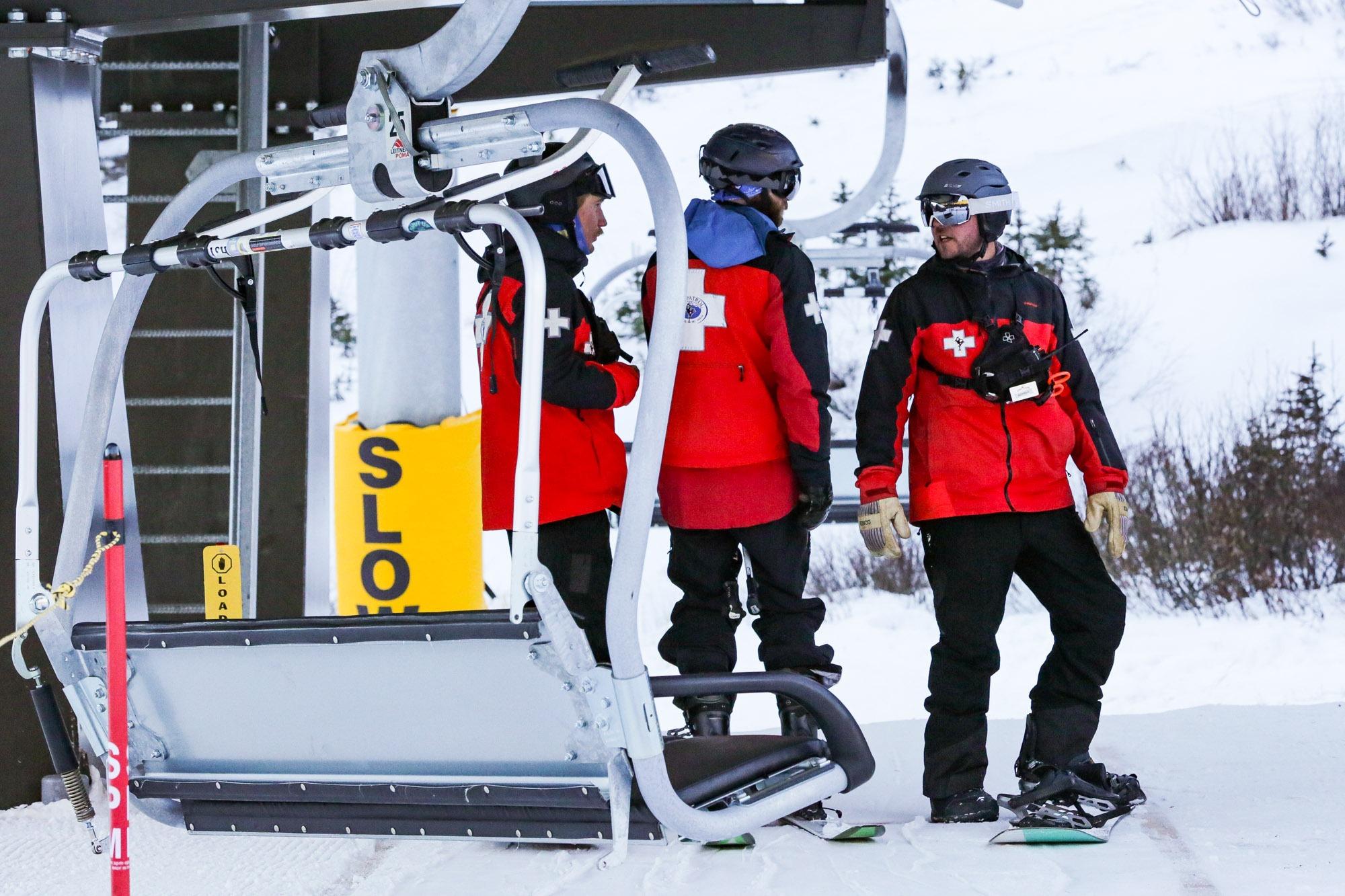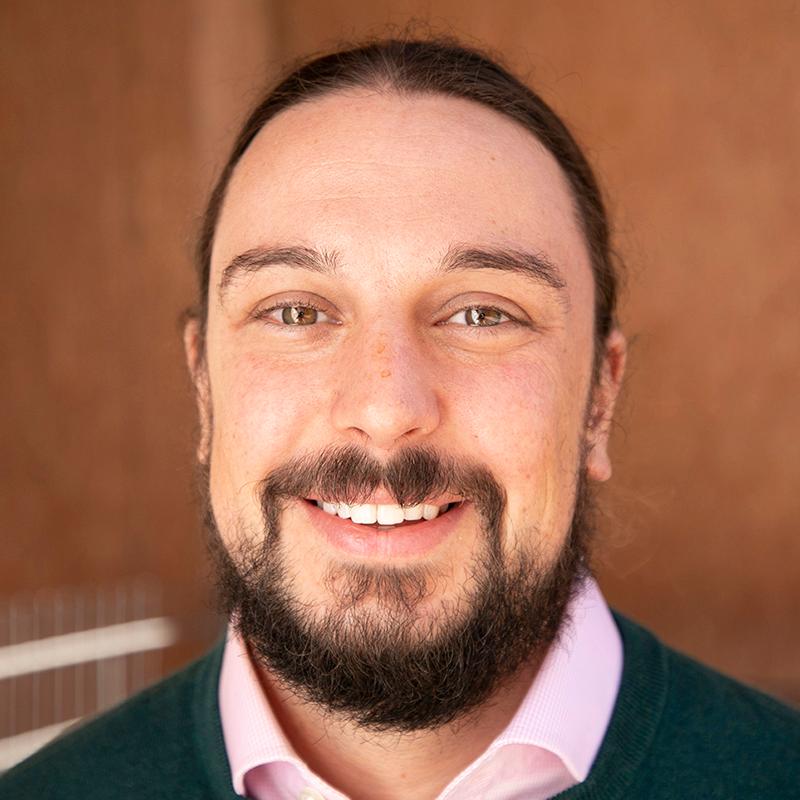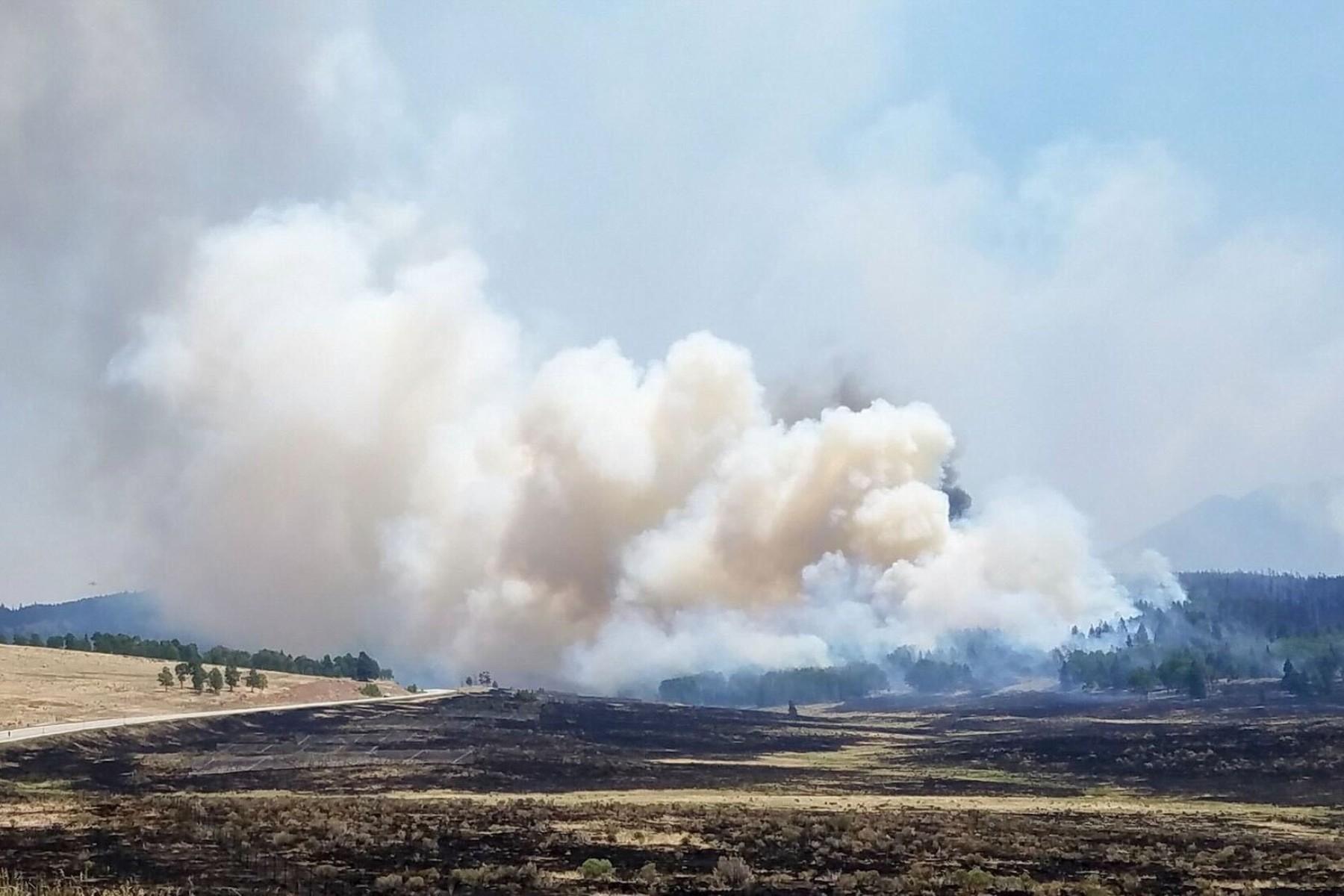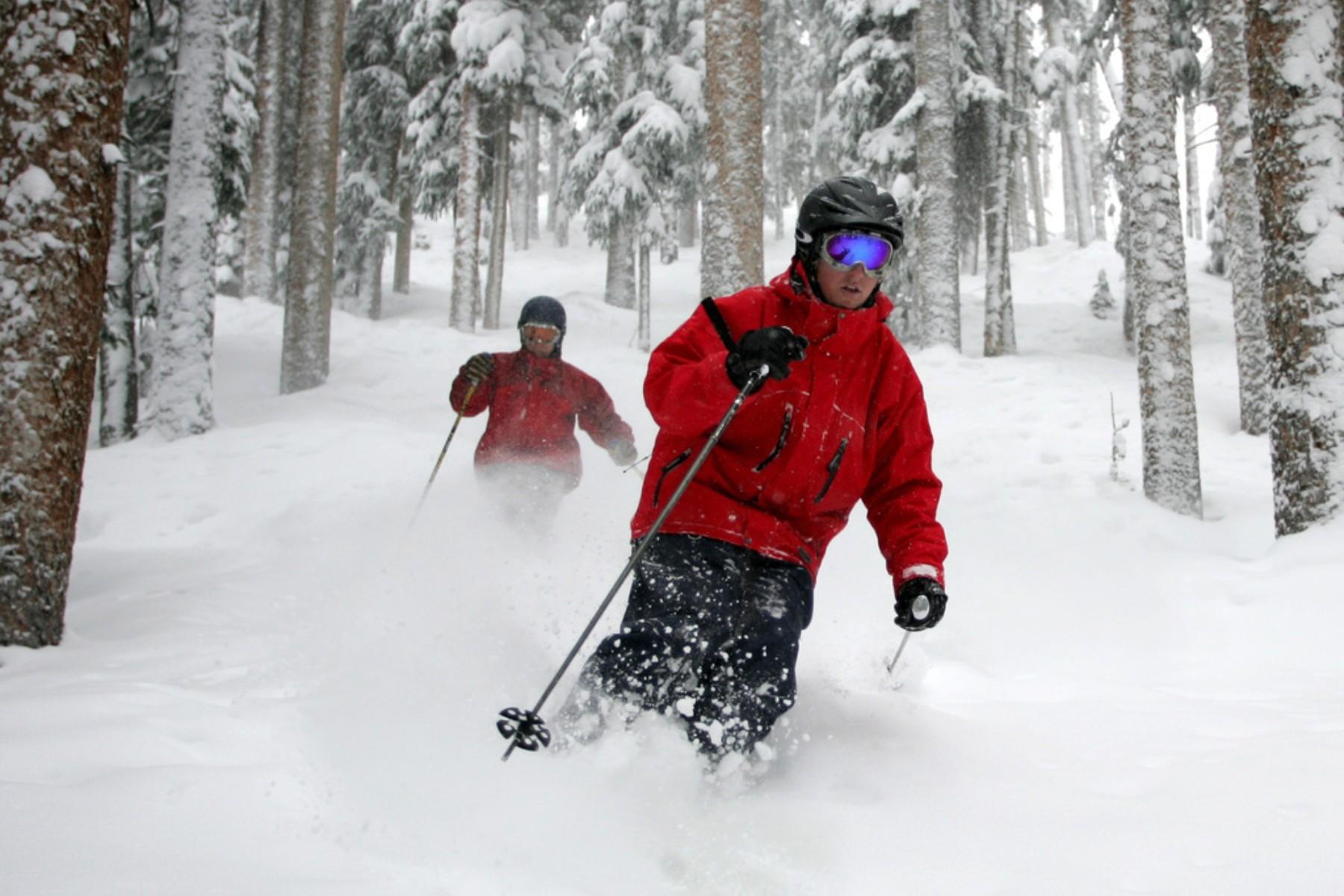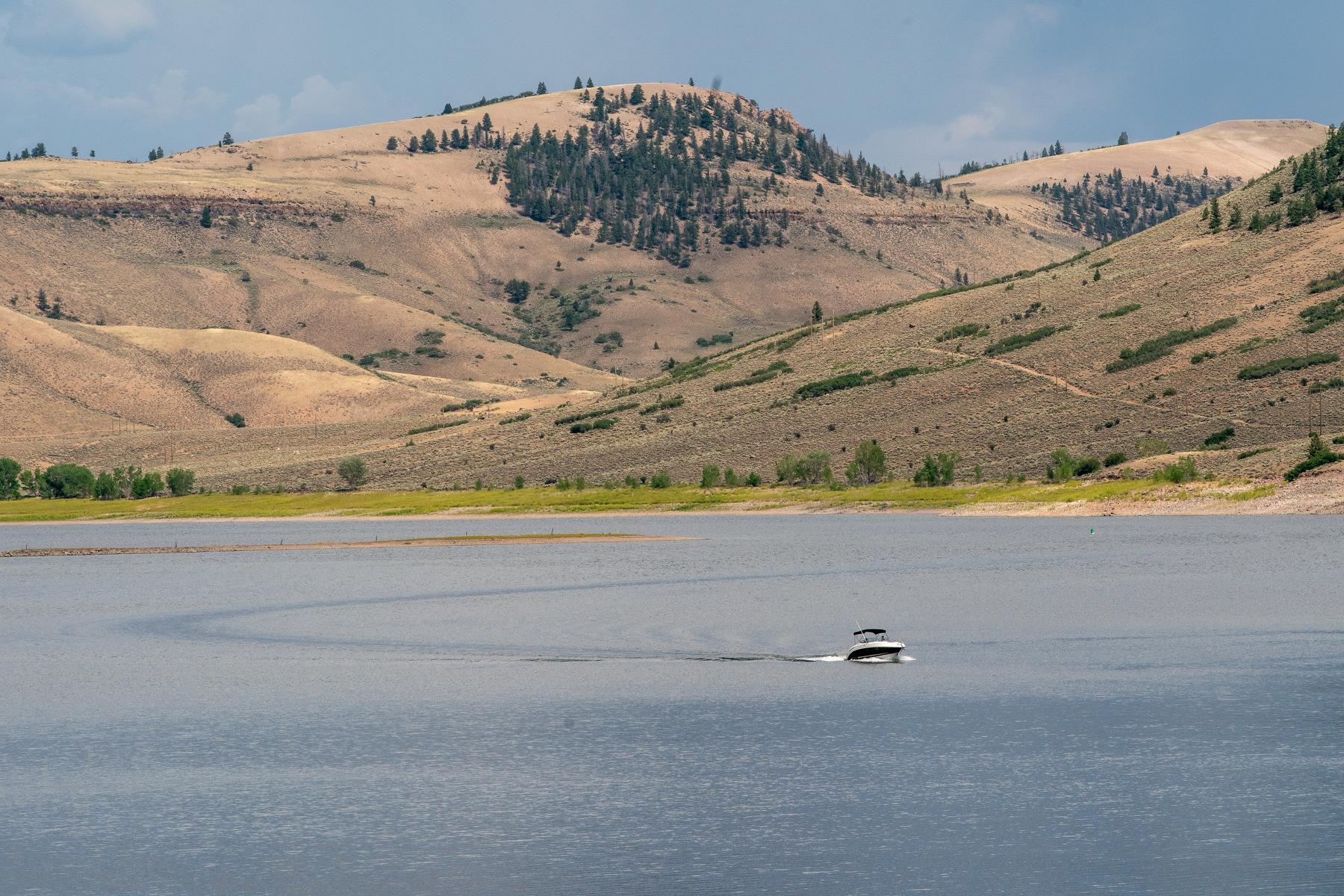
This story was originally published by Colorado Newsline.
By Chase Woodruff, Colorado Newsline
As historic drought conditions on the Western Slope fuel another dangerous wildfire season, a new paper from researchers at the University of Colorado Boulder warns that human-caused climate change is playing a major role in making those conditions worse.
Previously published climatological research has found that the Colorado River Basin’s current “megadrought” is the worst dry spell the region has experienced in at least 1,200 years. But a new study, published last week in the journal Nature, concludes that those persistently dry conditions are being driven by human activity “more intensely — and more directly — than previously understood,” its authors say.
Jeremy Klavans and Pedro DiNezio of CU Boulder’s Department of Atmospheric and Oceanic Sciences worked with other scientists from around the country to model how global climate patterns affect rainfall across the U.S. southwest.
Their findings concern a climate pattern known as the Pacific decadal oscillation. Related to the better-known El Niño-La Niña cycle to the south, the PDO is a natural fluctuation that brings warm water to the northeastern Pacific Ocean near the U.S. West Coast during its “positive” phase, leading to more storms and higher-than-average rainfall. During its “negative” phase, however, cooler water and air temperatures result in less precipitation in Western states.
Despite typically reversing itself every one or two decades, the PDO has been “stuck” in the negative, dry phase since the 1990s. By analyzing more than 500 climate model simulations developed by climatologists around the world, the study’s authors were able to paint the clearest picture yet of the influence of human activity on the PDO, and the resulting Southwestern megadrought.
“All of them had this common signal when we averaged them together,” DiNezio said in an interview. “By having so many simulations, we could be absolutely sure that this was not an artifact of a single model, or of a subset of simulations.”
Severe drought conditions have persisted in the Colorado River Basin since 2000, putting increased stress on the water supplies relied on by about 40 million people in Colorado and six other Western states. Water levels in two key reservoirs, Lake Mead and Lake Powell, have fallen to record lows in recent years.
Rising levels of greenhouse gases, mostly the result of fossil-fuel combustion, have caused much of western Colorado and neighboring states in the Colorado River’s Upper Basin to warm by an average of more than 4 degrees Fahrenheit above pre-industrial levels, according to National Oceanic and Atmospheric Administration data.
Prior research has attributed about 40% of the post-2000 megadrought to higher temperatures alone, as hotter weather leads to greater evaporation of moisture from water surfaces and soils. Modeling global warming’s precise impacts on rainfall patterns has proved more elusive, but DiNezio said the new research “add(s) more human influence to that previous number.”
“What’s important here is that we’re showing that rainfall has also been influenced by humans, in addition to just evaporation,” he said. “Both contribute to drought.”
Colorado and other states that are parties to the 103-year-old Colorado River Compact have negotiated for years over how to distribute the cuts to water use made necessary by the basin’s ongoing drought. The federal Bureau of Reclamation on Friday announced another year of reduced water allocations for the Lower Basin states of Arizona and Nevada.
Not long ago, the possibility that the Pacific decadal oscillation would eventually reverse itself offered hope that the long-term drought outlook for the U.S. Southwest wasn’t as bad as it seemed. Instead, evidence now suggests the last two decades are the region’s “new normal.”
“I was a Ph.D. student in 2012, and there was a consensus that eventually (the PDO) was going to flip,” DiNezio. “We had a big El Niño in 2015, and there was this idea that El Niño will flip the PDO back to the opposite, rainfall-producing phase. And we had that big El Niño event, and the PDO remained stuck. We just had an El Niño event in 2023 … and (it) also didn’t flip the PDO.”
“That’s the most important implication of our findings,” he added. “That this drought is here to stay, unless we do something about rising temperatures and global warming.”

